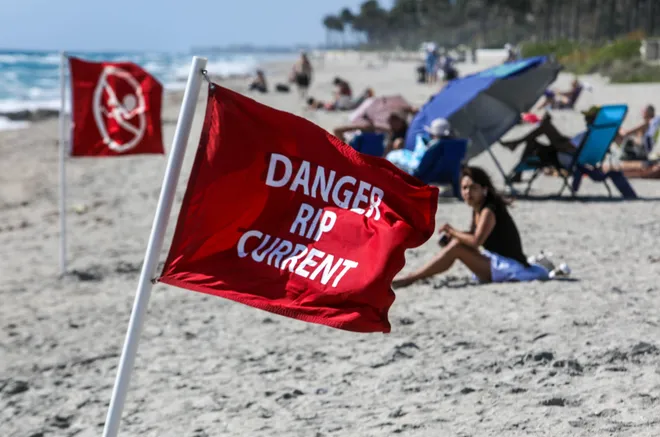More than 150 rescued over 5 days from rip currents at North Carolina beaches
More than 160 swimmers were rescued over the last week and weekend from rip currents on North Carolina beaches.
The National Weather Service in Wilmington, North Carolina told USA TODAY that 164 rescues from rip currents were performed from June 18-22 in New Hanover County along the coast, with 95 alone at Carolina Beach.
The National Weather Service said the weekend's currents were due to an east-southeast swell and the full moon. As of Tuesday, the NWS warns that part of the coast, from around New Hanover to Pender is still at a moderate rip current risk, and the coastal area from Coastal Onslow to Shackleford Banks is at a high risk.
Here's what to know about rip currents as people flock to beaches this summer.
Rip currents:A guide to the beachside danger causing drownings

Rip current deaths this summer
People at beaches around the southeast have been affected by rip currents this month, with a couple drowning off Stuart Beach at Hutchinson Island, Florida on June 20 and four people killed within 48 hours off Panama City, Florida as of June 22.
What is a rip current?
A rip current is a current of water flowing away from the shore at surf beaches, according to the National Oceanic and Atmospheric Administration. Rip currents typically extend from near the shoreline, through the surf zone and past the line of breaking waves.
They are formed when waves break near the shoreline, piling up water between breaking waves and the beach, the NOAA says. Water can return to sea via a rip current, a narrow jet of water moving away from shore perpendicular to the shoreline. The length of rip currents can vary, from as narrow as 10-20 feet in width to up to 10 times wider.

How to spot a rip current
Rip currents typically form at low spots or breaks in sandbars, and can occur at any beach with breaking waves, according to the NOAA. Some clues of rip currents can include:
- Channel of churning, choppy water
- Area with a notable difference in water color
- Line of foam, seaweed or debris moving steadily seaward
- Breaking in incoming wave pattern

What to do if you're caught in a rip current
Getting caught in a rip current can be terrifying, but there are ways to safety get out of one. Here's what to know it it happens.
- Relax: Rip currents pull you out, not under.
- Swim parallel to the beach and not against the current.
- Float or tread water until you escape the current or are rescued.
- Draw attention to yourself by yelling and waving.
If someone else is caught in a rip current, alert a lifeguard, dial 911 or throw the person something that floats. Do not enter the water yourself without a flotation device.
Contributing: Jennifer Borresen, USA TODAY.
Disclaimer: The copyright of this article belongs to the original author. Reposting this article is solely for the purpose of information dissemination and does not constitute any investment advice. If there is any infringement, please contact us immediately. We will make corrections or deletions as necessary. Thank you.






